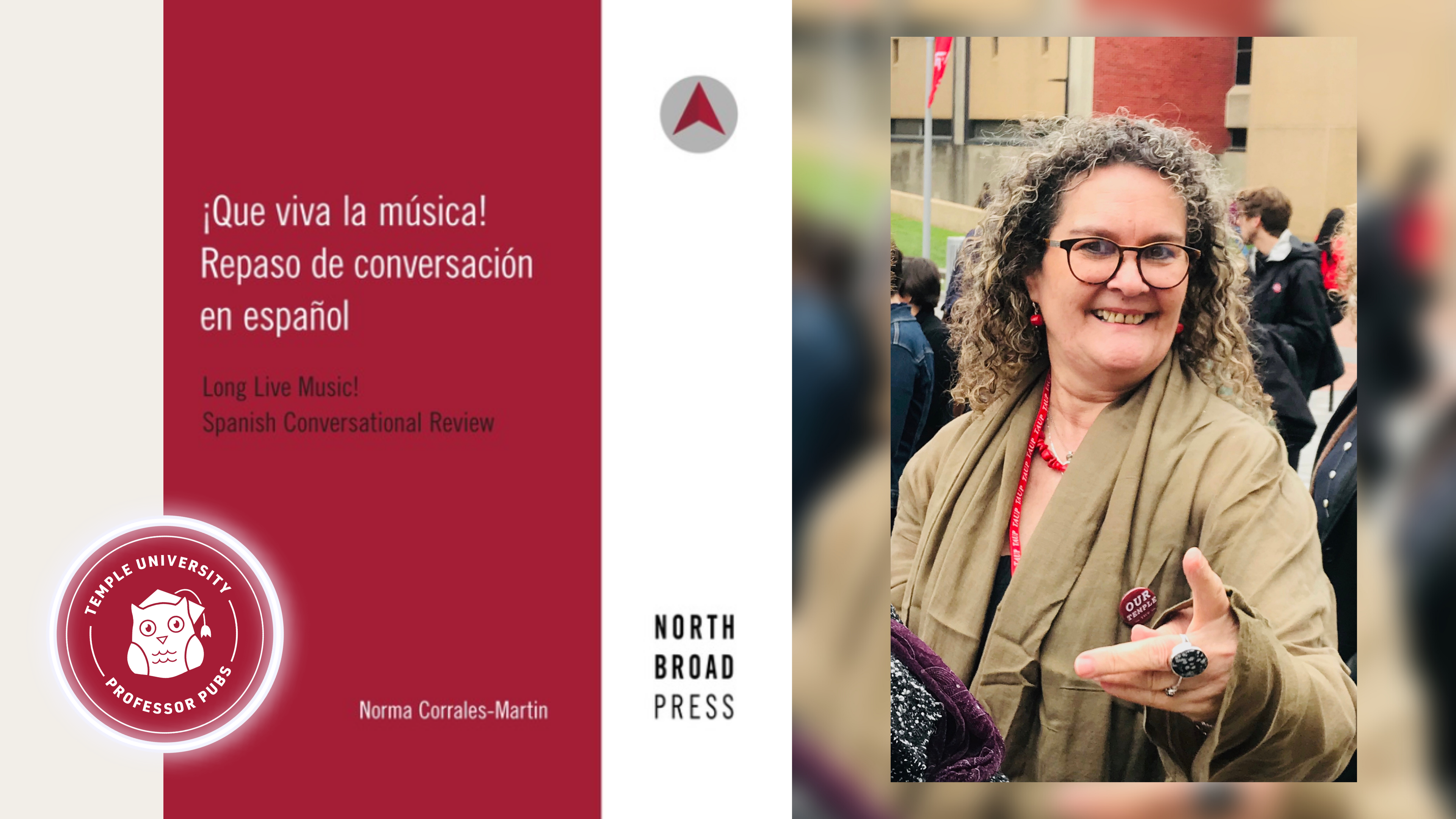Since she was a child, Temple Associate Professor of Instruction in Spanish and Portuguese, Norma Corrales-Martin knew she would teach language. Growing up in Colombia, she read all the books she could find at her home and started asking her neighbors for more. She was inspired by her mom, an avid user of sayings and proverbs, and by her family’s love of language.
Now committed to changing the way we see grammar, Corrales-Martin has been drawing from the richness of her background to research how to teach grammar in a way students can best understand. Her recent book, ¡Qué viva la música!, is the result of that research. She organized her book as an open textbook for conversational review around nine different songs that provide students opportunities to practice listening, speaking and writing the key grammatical structures of Spanish.
Temple University published her book in its open library, North Broad Press, which publishes open textbooks. Such textbooks are part of a growing movement in the United States for publishing books in online open textbook libraries, where they are easily accessible to everyone.
“We’ve already had great reviews in the open textbook library,” Corrales-Martin said. “I hope more people will not only see how my book is a great resource for teaching, but also for professors to learn how to teach with music. It can be a model for them.”
“I hope more people will not only see how my book is a great resource for teaching, but also for professors to learn how to teach with music. It can be a model for them.”
—Norma Corrales-Martin, Temple Associate Professor of Instruction in Spanish and Portuguese
A $500 grant from the Charles Library enabled Corrales-Martin to put the book together. Then she taught a semester with the book before placing it online.
As part of its pre-publication process, Temple’s North Broad Press asked Corrales-Martin to survey her students about the methods she had already been using in class. In general, the students responded well to the material. Not only because they didn’t have to buy a textbook, but also because they were learning in a way they liked: through music. Each song selected incorporates a communicative purpose, teaching about one specific aspect of Spanish grammar. Together the songs present a unified approach.
According to Corrales-Martin, teaching with music is successful since it pays close attention to student needs. A variety of research tells us that students learn in more than one way. Some learn through seeing or speaking, while others learn by hearing or touching.
“Students don’t have just the listening experience because we also do karaoke with each song,” she said. “I also ask the students to dance, write about, or even watch the videos of the songs, promoting a visual experience.”
Corrales-Martin reports the song selection process was the most challenging part of the three-year process of putting this book together. Making ¡Qué viva la música! even more useful and comprehensive, the book includes a list of other songs professors can use for each grammatical topic. ¡Qué viva la música! also includes a sample syllabus and tables for practicing verbs and conjugations.
Part of Corrales-Martin’s vision always encompassed conveying to other Spanish teachers, “You can teach songs so students aren’t afraid of grammar.” And that is exactly what this book does.
By Renata Buscher Kaminski, International Affairs Communications Intern
Photo Courtesy of Norma Corrales-Martin, Dr. Thomas Morton

